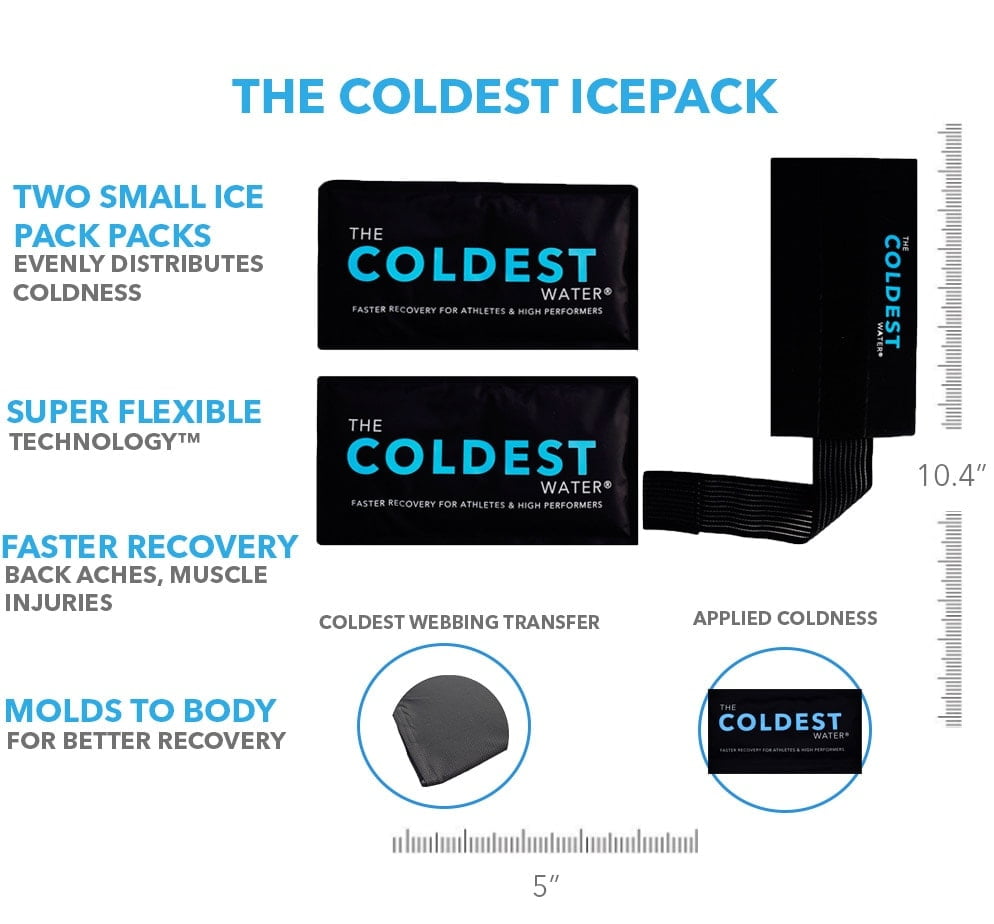Use of Ice or Heat in Cryotherapy and Thermotherapy
Ice VS Heat for Musculoskeletal Injury
Cryotherapy and Thermotherapy
Following a musculoskeletal injury, should I apply heat or ice? This is a question that physiotherapists answer often. In both cases, these are analgesic modalities (aimed at reducing pain) that are easy to apply at home if you use properly. Both temporarily reduce pain, control swelling and promote tissue healing. However, the wrong choice of cryotherapy modality (cold therapy) or thermotherapy (hot therapy) may have the opposite effect and aggravate the condition or delay healing of an injury. Thus, caution needed regarding the choice and use of the therapy. If in doubt, consult a physiotherapy professional!
Read More: The Coldest Water® knee Ice Pack, (Gel Pack)

SHOP NOW
Cryotherapy:
The application of ice or a cooling agent on the skin can have the following consequences on the troubled place. The decrease in blood circulation and cell activity (and therefore inflammation), decrease in pain, increase the stiffness of surrounding tissues and muscle relaxation (via reduction of muscle spasms).
The best treatment of cryotherapy is ice, which can be used at home as an ice pack massage. We recommend applying the ice pack for 10 to 15 minutes every 2 or 3 hours.
You should note that prolonged use or too direct contact with the ice can cause frostbite or cold burns. Therefore, use only an ice pack. If you are using ice directly, use a towel between the ice and the skin and to check the skin every 5 minutes under the treated area. Never apply ice directly.
SHOP NOW
Thermotherapy:
The application of heat pack leads to the following physiological effects on the affected area. It increases blood circulation and cell activity, reduced pain, increased tissue flexibility, and muscle relaxation.
The heat pack application methods are varied: dry heat (electric heating pads, “magic bags” or hot water bottles) or moist heat (hot bath or hot shower or bags, often used in physiotherapy clinics). Although both types of thermotherapy are effective, it has been shown that moist heat is more beneficial for penetrating deep tissue. The recommended dosage for thermotherapy is approximately 20 to 30 minutes.
Caution required for the application of thermotherapy modalities because of the risk of burns. A repeated examination of the skin required every 5 minutes to ensure the integrity of the skin and to detect abnormal redness.
SHOP NOW
Context of use:
Following a musculoskeletal injury, the first phase of tissue healing initiated by the human body is the inflammatory phase. It has a normal duration varying between 24 hours to 10 days, depending on the severity of the injury. Swelling, redness, and pain on palpation of the affected area. During this phase, it is best to use cryotherapy to prevent further tissue damage.
If the pain persists beyond the acute phase; you can use the heat. The joint has more stiffness than pain and the signs of inflammation (heat, redness, swelling, pain) dimmed. The use of thermotherapy may also be appropriate before exercise to increase tissue temperature, muscle flexibility and range of motion.
Read More: Coldest Water Bottle Craze Sweeping the Nation

However, there are phases in which the application of thermotherapy and cryotherapy prohibited, especially in the case of severe circulatory problems. A significant decrease in sensitivity, taking drugs affecting the state of consciousness (danger of burning) and a cancerous tumor. In addition, we can’t use heat in cases of wound, infection, acute stage of inflammation, skin disease (e.g. eczema) or on the abdomen including pregnant women’s pelvis.
You should not use Cryotherapy in individuals with the following conditions. It includes anemia, Raynaud’s syndrome, diabetes, severe hypertension, open wound.
Conclusion:
The use of an ice pack or heat pack in cryotherapy and thermotherapy is a simple and easy way to provide temporary relief of pain or the accelerated healing from an injury.



















